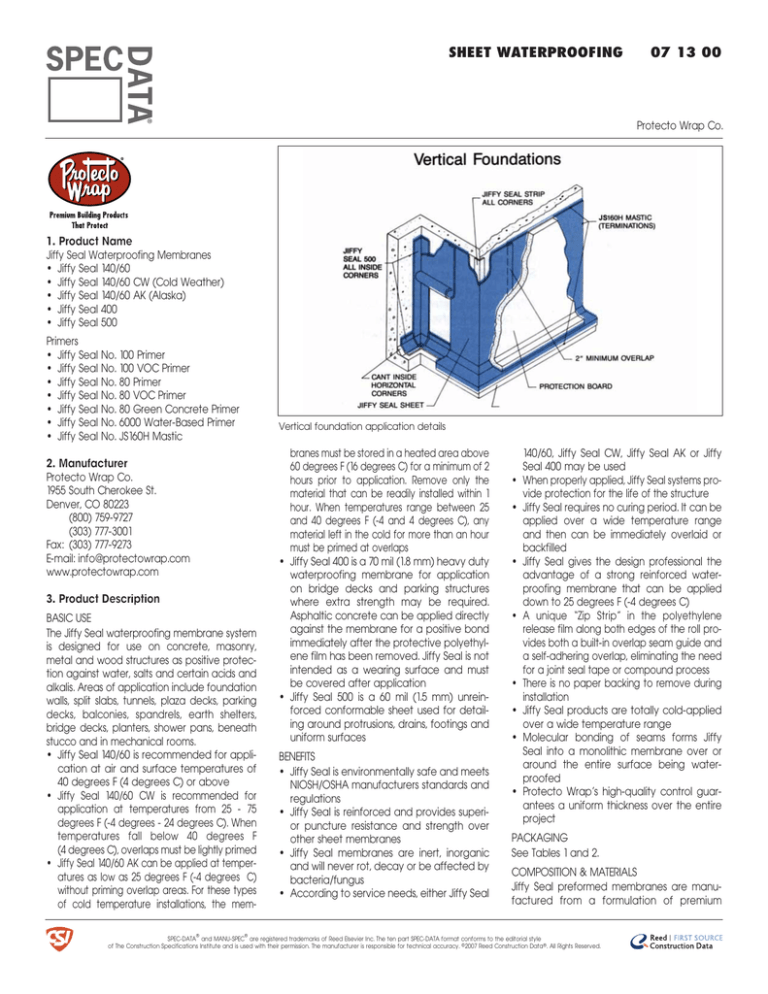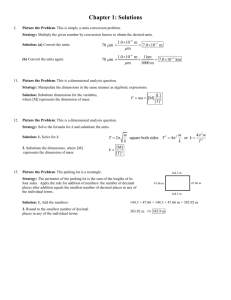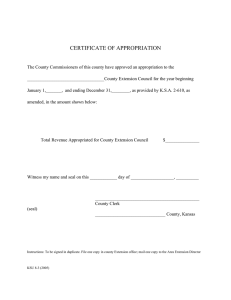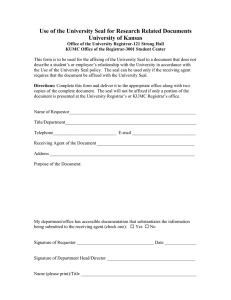
SHEET WATERPROOFING
07 13 00
®
Protecto Wrap Co.
1. Product Name
Jiffy Seal Waterproofing Membranes
• Jiffy Seal 140/60
• Jiffy Seal 140/60 CW (Cold Weather)
• Jiffy Seal 140/60 AK (Alaska)
• Jiffy Seal 400
• Jiffy Seal 500
Primers
• Jiffy Seal No. 100 Primer
• Jiffy Seal No. 100 VOC Primer
• Jiffy Seal No. 80 Primer
• Jiffy Seal No. 80 VOC Primer
• Jiffy Seal No. 80 Green Concrete Primer
• Jiffy Seal No. 6000 Water-Based Primer
• Jiffy Seal No. JS160H Mastic
2. Manufacturer
Protecto Wrap Co.
1955 South Cherokee St.
Denver, CO 80223
(800) 759-9727
(303) 777-3001
Fax: (303) 777-9273
E-mail: info@protectowrap.com
www.protectowrap.com
3. Product Description
BASIC USE
The Jiffy Seal waterproofing membrane system
is designed for use on concrete, masonry,
metal and wood structures as positive protection against water, salts and certain acids and
alkalis. Areas of application include foundation
walls, split slabs, tunnels, plaza decks, parking
decks, balconies, spandrels, earth shelters,
bridge decks, planters, shower pans, beneath
stucco and in mechanical rooms.
• Jiffy Seal 140/60 is recommended for application at air and surface temperatures of
40 degrees F (4 degrees C) or above
• Jiffy Seal 140/60 CW is recommended for
application at temperatures from 25 - 75
degrees F (-4 degrees - 24 degrees C). When
temperatures fall below 40 degrees F
(4 degrees C), overlaps must be lightly primed
• Jiffy Seal 140/60 AK can be applied at temperatures as low as 25 degrees F (-4 degrees C)
without priming overlap areas. For these types
of cold temperature installations, the mem-
Vertical foundation application details
branes must be stored in a heated area above
60 degrees F (16 degrees C) for a minimum of 2
hours prior to application. Remove only the
material that can be readily installed within 1
hour. When temperatures range between 25
and 40 degrees F (-4 and 4 degrees C), any
material left in the cold for more than an hour
must be primed at overlaps
• Jiffy Seal 400 is a 70 mil (1.8 mm) heavy duty
waterproofing membrane for application
on bridge decks and parking structures
where extra strength may be required.
Asphaltic concrete can be applied directly
against the membrane for a positive bond
immediately after the protective polyethylene film has been removed. Jiffy Seal is not
intended as a wearing surface and must
be covered after application
• Jiffy Seal 500 is a 60 mil (1.5 mm) unreinforced conformable sheet used for detailing around protrusions, drains, footings and
uniform surfaces
BENEFITS
• Jiffy Seal is environmentally safe and meets
NIOSH/OSHA manufacturers standards and
regulations
• Jiffy Seal is reinforced and provides superior puncture resistance and strength over
other sheet membranes
• Jiffy Seal membranes are inert, inorganic
and will never rot, decay or be affected by
bacteria/fungus
• According to service needs, either Jiffy Seal
•
•
•
•
•
•
•
•
140/60, Jiffy Seal CW, Jiffy Seal AK or Jiffy
Seal 400 may be used
When properly applied, Jiffy Seal systems provide protection for the life of the structure
Jiffy Seal requires no curing period. It can be
applied over a wide temperature range
and then can be immediately overlaid or
backfilled
Jiffy Seal gives the design professional the
advantage of a strong reinforced waterproofing membrane that can be applied
down to 25 degrees F (-4 degrees C)
A unique “Zip Strip” in the polyethylene
release film along both edges of the roll provides both a built-in overlap seam guide and
a self-adhering overlap, eliminating the need
for a joint seal tape or compound process
There is no paper backing to remove during
installation
Jiffy Seal products are totally cold-applied
over a wide temperature range
Molecular bonding of seams forms Jiffy
Seal into a monolithic membrane over or
around the entire surface being waterproofed
Protecto Wrap’s high-quality control guarantees a uniform thickness over the entire
project
PACKAGING
See Tables 1 and 2.
COMPOSITION & MATERIALS
Jiffy Seal preformed membranes are manufactured from a formulation of premium
SPEC-DATA ª and MANU-SPEC ª are registered trademarks of Reed Elsevier Inc. The ten part SPEC-DATA format conforms to the editorial style
of The Construction Specifications Institute and is used with their permission. The manufacturer is responsible for technical accuracy. ©2007 Reed Construction Dataª. All Rights Reserved.
SHEET WATERPROOFING
®
grade bituminous resins modified with synthetic resins. This SBS modified, rubberized asphalt
is then reinforced with a strong, inert reinforcement to withstand puncture and severe
stress. The reinforcement is sandwiched
between 2 layers of rubberized asphalt, making the membrane tacky on both sides, which
means the membrane bonds cleanly to the
primed surface and to itself on overlap areas.
A release film is laid on the top of the membrane to keep the material from adhering to
itself prior to application.
COMPATIBILITY
Jiffy Seal is compatible with asphalts and most
urethanes. If there are any questions about
product compatibility, contact a Protecto
Wrap representative before applying Jiffy
Seal in such applications.
ACCESSORY MATERIALS
JS160H Mastic and Protecto Wrap primers are
specially formulated for use with Jiffy Seal
membranes. A good drainage design at or
near the footings, along with a drainage mat,
will ensure a sound waterproof system.
No. 100 Primer is a high-tack SBS rubber
base primer. It is used on all vertical surfaces
before application of the membrane and on
all surfaces with temperatures between 25
and 40 degrees F (-4 and 4 degrees C).
No. 100 VOC Primer is a VOC compliant version of Protecto Wrap’s standard No. 100
Primer.
No. 80 Primer is an asphalt based primer
suitable for use on all horizontal applications
above 40 degrees F (-7 degrees C).
No. 80 VOC Primer is a VOC compliant version of Protecto Wrap’s standard No. 80 Primer.
No. 80 Green Concrete Primer is for use on
green concrete surfaces.
No. JS160H Mastic is a rubberized blend of
bituminous and synthetic resins used for sealing detail cuts and membrane terminations.
No. 6000 Water-Based Primer is a waterbased primer that contains no VOCs. The No.
6000 Primer comes in a 1 gallon concentrate.
Mix the concentrate at a ratio of 1 part water
to 1 part concentrate for a vertical application (or as needed for jobsite conditions). For
horizontal applications, mix 2 parts water to 1
part concentrate.
LIMITATIONS
• Jiffy Seal is not recommended for application where the membrane will be exposed
to continuous sunlight
• Do not apply primer or membrane to wet,
07 13 00
Protecto Wrap Co.
TABLE 1 PRODUCT PACKAGING (JIFFY SEAL)
Jiffy Seal 140/60
Jiffy Seal 400
Jiffy Seal 500
50 (15.2)
50 (15.2)
50 (15.2)
12, 30, 60 (305, 762, 1524)
30, 60 (762, 1524)
6, 12 (152, 305)
4, 1, 1
1
8, 4
60, 84, 120 (27, 38, 54)
68, 138 (31, 63)
75 (34)
50, 125, 250 (4.6, 11.6, 23)
125, 250 (11.6, 23)
25, 50 (2.3, 4.6)
Length, ft (m)
Width, in (mm)
1
Rolls/carton
Weight/carton, lb (kg)
Coverage, ft2 (m2)
1
Special widths are available upon request.
TABLE 2 PRODUCT PACKAGING (PRIMER AND MASTIC)
No. 100 Primer
No. 80 Primer
JS160H Mastic
-
-
41 (18.6)
1 gallon can, lb (kg)
38 (17.2)
38 (17.2)
55 (25)
5 gallon pail, lb (kg)
46 (21)
46 (21)
68 (31)
485 (220)
485 (220)
-
Jiffy Seal 140/60
Jiffy Seal 400
Jiffy Seal 500
60 (1.5)
70 (1.8)
60 (1.5)
Tensile strength,
membrane
425
425
-
Tensile strength of polyester
reinforcement only
(ASTM D412), psi (kPa) min
3200
3200
-
Elongation (ASTM D412), %
500
500
1500
0.003
0.002
0.003
Puncture resistance
(ASTM E154), lb (N)
80 (356)
80 (356)
-
Pliability (ASTM D146)
Passes
Passes
Passes
600 (4.1) min
500 (3.5) min
-
Black
Black
Black
0.23
0.23
0.23
Unaffected
Unaffected
Unaffected
150
150
150
36 10.5 oz tubes, lb (kg)
55 gallon drum, lb (kg)
TABLE 3 TYPICAL PHYSICAL PROPERTIES (JIFFY SEAL)
Thickness, mil ± (mm)
Permeance (ASTM E96B), max
Tensile strength
(ASTM D412), psi (MPa)
Color
Water absorption
Exposure to fungi in soil for
16 weeks (GSA-PBS 07115)
Resistance to hydrostatic
head (feet of water) 1
1
Hydrostatic head tests are performed by applying membrane on primed concrete, then sealing the
waterproofed concrete to a pressure chamber. Water is introduced to 150 head feet.
SPEC-DATA ª and MANU-SPEC ª are registered trademarks of Reed Elsevier Inc. The ten part SPEC-DATA format conforms to the editorial style
of The Construction Specifications Institute and is used with their permission. The manufacturer is responsible for technical accuracy. ©2007 Reed Construction Dataª. All Rights Reserved.
SHEET WATERPROOFING
®
damp, frosty or contaminated surfaces
• Do not apply primer or membrane to
frozen concrete
• Jiffy Seal is not recommended as a pond or
tank liner except for “between slab” applications
• Do not apply over sealants containing tar. If
bitumen modified materials are encountered,
consult a Protecto Wrap representative for
guidance
• Jiffy Seal is not designed for use as a finished traffic system
• For green concrete, use Jiffy Seal No. 80
Green Concrete Primer
• On rough surface areas, Jiffy Seal must be
placed over a well-adhered parget coat
4. Technical Data
APPLICABLE STANDARDS
ASTM International
• ASTM D146 Standard Test Methods for
Sampling and Testing Bitumen-Saturated
Felts and Woven Fabrics for Roofing and
Waterproofing
• ASTM D412 Standard Test Methods for
Vulcanized Rubber and Thermoplastic
Elastomers-Tension
• ASTM D903 Standard Test Method for Peel
or Stripping Strength of Adhesive Bonds
• ASTM D1970 Standard Specification for SelfAdhering Polymer Modified Bituminous
Sheet Materials Used as Steep Roofing
Underlayment for Ice Dam Protection
• ASTM E96/E96M Standard Test Methods for
Water Vapor Transmission of Materials
• ASTM E154 Standard Test Methods for Water
Vapor Retarders Used in Contact with Earth
Under Concrete Slabs, on Walls, or as
Ground Cover
Underwriters Laboratories, Inc. (UL) - UL 790
Standard Test Methods for Fire Tests of Roof
Coverings
Department of the Navy - NAVFAC TS-07111
General Services Administration (GSA)
• PBS PCD 07121
• PBS 07115
U.S. Department of Veterans Affairs (VA) - H08-1
U.S. Army Corps of Engineers (USACE) - CEGS07111-3-82
Federal Construction Guide Spec - FCGS-07111
American Railway Engineers Association,
Chapter 29
07 13 00
Protecto Wrap Co.
TABLE 4 TYPICAL PHYSICAL PROPERTIES (PRIMER AND MASTIC)
No. 100 Primer
Excellent
No. 80 Primer
Excellent
JS160H Mastic
Excellent
Adhesion to concrete
Excellent
Excellent
Excellent
Adhesion to membrane
Excellent
Excellent
Excellent
Adhesion to steel
Shelf life (min)
1 year
1 year
1 year
Tack-free time (minutes)
15 - 45
15 - 45
15 - 45
Coverage ft2/gal (m2/L)
150 - 200 (3.8 - 5)
175 - 250 (4.4 - 6.3)
22 - 50 (0.6 - 1.3)
Amtrak Standard Specification 7.01
Conforms to California VOC regulations
APPROVALS
Consult manufacturer for current information
on approvals by code bodies and other
industry entities.
PHYSICAL PROPERTIES
See Tables 3 and 4.
5. Installation
STORAGE & HANDLING
Store all material inside in a dry space at temperatures between 50 and 90 degrees F (10 and
32 degrees C). Do not store in direct sunlight. Do
not remove material from box until ready to use.
For cold weather applications, store Jiffy
Seal in a heated airspace at a temperature of
50 degrees F (10 degrees C) or higher for at
least 2 days prior to application. Remove only
the material that can be applied within 2 hours.
PREPARATORY WORK
Handle and store product according to manufacturer’s recommendations.
Deliver materials in manufacturer’s original,
unopened, undamaged containers with identification labels intact. Store materials protected
from exposure to harmful environmental conditions and at temperature and humidity conditions recommended by the manufacturer.
Verify that site conditions are acceptable
for installation. Do not proceed with installation
until unacceptable conditions are corrected.
Surface Preparation
Prior to application, ensure that all surfaces
have, at a minimum, a smooth, steel-troweled
finish and are clean, free of sharp protrusions,
loose aggregate, dust, voids or spalled areas.
A broom finish is not permitted.
All exposed metal surfaces must be clean
and free of all paint, oil, coatings, rust or any
other contaminants. Wire brush and solvent
wipe all metal surfaces.
Repair all areas as needed before applying
Protecto Wrap primer.
CURING
Concrete must be cured a minimum of 28 days
for normal structural concrete and 14 days for
lightweight structural concrete.
Remove all forms as soon as possible to prevent moisture entrapment. Grind uneven form
lines flush to the wall. Fill all tie holes.
Do not apply Jiffy Seal over frozen substrates. For green concrete application, use
Jiffy Seal No. 80 Green Concrete Primer.
Consult Protecto Wrap Co. for green concrete
cure time recommendations.
Use form release agents that will not transfer
to the concrete or block walls. Concrete curing
compounds must be resin based and contain
no oil, wax or pigment. If Jiffy Seal membranes
are to be applied to a concrete or wood surface where other curing compounds or wood
treatment is to be used, contact Protecto Wrap
for recommendations.
If additives have been placed in the concrete that could slow the dissipation of moisture, contact Protecto Wrap Co. before installation of Jiffy Seal.
Masonry walls must not have struck joints.
Make sure all masonry joints on block and
brick walls are struck flush in order to provide
a smooth surface. On rough or porous surfaces, use a well-adhered mortar coat to provide a smooth surface.
Corners
For all inside horizontal corners, use cant strips
or fillets and Jiffy Seal 500. Wood or fiber cant
strips are not recommended.
After application of primer and Jiffy Seal
500, terminate the membrane a minimum of 3"
(76 mm) beyond the detail tape. The Jiffy Seal
must be applied flush to all angles of the inside
corner. If the design does not allow for a cant
strip at interior corners, consult Protecto Wrap
SPEC-DATA ª and MANU-SPEC ª are registered trademarks of Reed Elsevier Inc. The ten part SPEC-DATA format conforms to the editorial style
of The Construction Specifications Institute and is used with their permission. The manufacturer is responsible for technical accuracy. ©2007 Reed Construction Dataª. All Rights Reserved.
SHEET WATERPROOFING
®
Co. for detail recommendations.
All outside corners must be double-covered
to a minimum of 6" (152 mm) on each side of
the axis of the corners. Apply a 12" (305 mm)
wide strip of membrane; then cover it with a
full width sheet or overlap the full width a minimum of 6" (152 mm) from the axis on both sides
of the corner.
Cant strips of epoxy mortar, latex modified
cement mortar or urethane sealants should be
used on inside horizontal corners. Do not use
JS160H Mastic as a fillet. Ensure outside corners
are as smooth as possible and free of sharp
protrusions by rounding or chamfering.
Apply JS160H Mastic to all terminations and
overlaps within 12" (305 mm) of corners. For
inside corners at all vertical-to-horizontal transitions, apply a troweled bead of JS160H Mastic
to the overlap. Trowel the mastic 3" (76 mm) up
and 3" (76 mm) out from the transition on the
seam. A 60 mil (1.5 mm) maximum wet film
thickness is recommended. Apply mastic the
same day of application.
Protrusions and Drains
Areas around pipe, conduit or any protrusions
through the membrane should be taped with a
6" (152 mm) piece of Jiffy Seal 500. Jiffy Seal
500 should be forced and formed to fit tightly
to the protrusion and the deck.
At the drain opening, apply a light coat of
primer and allow it to fully cure. Cover the drain
at least 6" (152 mm) past all perimeters with Jiffy
Seal 500. Remove the release film, make an X
cut and form the Jiffy Seal 500 into the drain,
ensuring that the membrane has 100% contact
with the primed metal drain surface.
Double-ply the opening with a full sheet of
Jiffy Seal 140/60 over the Jiffy Seal 500. Cut
and form it around or into the protrusion or
drain. This should be followed with a troweled
bead of JS160H Mastic. Special care should
be taken in placing a troweled bead of
JS160H Mastic at any drain, conduit or protrusion where cutting or forming of the membrane is required.
JS160H Mastic and Protecto Wrap primers
are specifically formulated for use with Jiffy
Seal membranes. Substitutions are specifically
not recommended.
A good drainage design at or near the
footings, along with a drainage mat, will assist
in having a waterproof system. Protecto Wrap
2000V and 2000H drainage boards are recommended and approved for use with the
Jiffy Seal waterproofing system.
07 13 00
Protecto Wrap Co.
Expansion Joints and Cracks
For joints less than 1/4" wide (6.4 mm) with movement less than 25%, use a 12" (305 mm) strip of
Jiffy Seal 140/60 to cover the opening.
All joints 1/4" (6.4 mm) and wider, or those
that move 25% or more, must be treated as a
standard expansion joint. Follow the
approved sealant manufacturer’s recommendation for design and use of appropriate
sealing materials.
Place a 12" (305 mm) strip of Jiffy Seal 140/60
face down over the expansion area, leaving
the release film in place to create a slip plane
over the joint. Cover the entire deck with standard width Jiffy Seal 140/60. Apply the material
from the low point of the slope to the high
point in a shingling effect. Remove the release
film and place protection board immediately
after application of the membrane.
APPLICATION
Priming
The application surface must be cleaned
using a broom, vacuum or an air compressor
dispensing clean, dry air so that all dust, loose
concrete, etc., is removed.
Thinning of the primer is not recommended.
When not in use, seal open containers to prevent evaporation of the solvents.
Apply primer to all surfaces by roller or brush,
at a rate of 150 - 250 ft2/gal (3.8 - 6.3 m2/L),
depending on the porosity of the surface.
Primed surface must be free of runs, puddles or
excessive primer, as the presence of these conditions can result in blistering.
The entire surface to be waterproofed
must be primed. Brush or roll out all primer
puddles or drips immediately. Prime only as
much of the surface as can be covered with
the membrane in half a working day. Do not
cover wet primer. The primed surface must be
protected from dust. Apply membrane when
primer is tacky but not wet.
Test the primer using the “Rule of Thumb”
method. Press thumb firmly on the primed surface and twist. If the primer feels pliable but
does not adhere to thumb, the primed surface is ready for membrane application.
Primed areas not covered within 8 hours
must be reprimed. If an area must be reprimed,
do not remove existing primer, but be certain
the area is clean and dry. The surface must be
free of dust, dirt and moisture. Reprime and
again allow the primed area to become tacky
prior to applying the membrane.
For all vertical applications over 8' (2.4 m) in
height, a second coat of primer should be
applied to the top 10" (254 mm) of the surface
to be covered. The membrane can be
applied when the second coat of primer is
tacky but not wet. The top 10" (254 mm) of the
membrane, along with all overlaps, must be
firmly rolled.
Vertical Application
After application of No. 100 Primer, run a strip of
Jiffy Seal 500 along the footing joint. Jiffy Seal
500 is unreinforced and may be formed well
into the footing corner reaching 3" - 6" (76 - 152
mm) up the vertical wall and 3" - 6" (76 - 152
mm) onto the footing, conforming to any irregularities in the surface.
Remove the release film from Jiffy Seal 500
and apply Jiffy Seal 140/60 from the top edge
of the wall downward so that the tack side
faces the primed surface. Pull the Jiffy Seal off
of the roll to the desired height on the wall or to
the height that is going to be readily backfilled.
Set the top edge of the sheet firmly onto
the primed surface. Roll or squeegee downward in the center of the material working
outward to the edges.
Jiffy Seal must be rolled or squeegeed over
the entire membrane surface to gain maximum
surface contact to the primed wall. The top 10"
(254 mm) edge of the membrane and all overlaps of the membrane must be well-adhered.
Bring Jiffy Seal 140/60 down the wall and
onto the footing. Terminate the membrane a
minimum of 3" (76 mm) over and past the edge
of the footing.
As application proceeds, remove the Zip
Strip from the preceding sheet of Jiffy Seal.
Move the roll over and align the overlap.
Again, pull the membrane off the roll to the
desired height and depress the top edge of
the material into the primer. Roll or squeegee
downward in the center of the material.
Working outward to the edges and pay particular attention to the overlap area. Remove
the release film from the entire membrane
the same day of application and install protection system.
Mastic Application
Ensure the release film is removed prior to
application of JS160H Mastic. Apply a troweled bead of JS160H Mastic at the top edge
of the applied membrane and extend coverage at least 1" (25.4 mm) onto the wall and 1"
(25.4 mm) onto the membrane. JS160H Mastic
also must be applied at any other termination
of the membrane, and this application must
take place at the end of the working day or
SPEC-DATA ª and MANU-SPEC ª are registered trademarks of Reed Elsevier Inc. The ten part SPEC-DATA format conforms to the editorial style
of The Construction Specifications Institute and is used with their permission. The manufacturer is responsible for technical accuracy. ©2007 Reed Construction Dataª. All Rights Reserved.
SHEET WATERPROOFING
®
when application is interrupted by change in
construction scheduling.
Drainage Boards and Footing Drains
Use Protecto Drain 2000V on vertical walls and
Protecto Drain 2000H on horizontal surfaces.
Waterstops, footing drains and most
drainage boards are compatible and may be
used in conjunction with Jiffy Seal waterproofing membranes. Consult Protecto Wrap for
compatible drainage systems.
Block Walls
For block wall waterproofing, apply a heavy
coat of Jiffy Seal No. 100 Primer and allow it to
fully cure. Apply a second coat of primer to
the top 10" (254 mm) of the block wall. When
the second coat of primer is tacky but not
wet, apply Jiffy Seal 140/60. Roll firmly to gain
maximum surface contact. Special emphasis
should be placed on pressure rolling the top
10" (254 mm) of the membrane along with
all seams.
Remove the release film immediately after
application of membrane. Place the protection course and backfill immediately after
installation of Jiffy Seal. If the membrane will
not be backfilled immediately after application, attach mechanical fasteners to the top
of the membrane and cover it with a light
coat of JS160H Mastic.
Horizontal Application
After priming the deck with Jiffy Seal No. 80,
apply the Jiffy Seal membrane from the low
point to the high point across the fall lines so
that the laps shed water on horizontal surfaces. Lay the membrane tack side down on
the primed surface. As the liner is applied,
smooth it out with a broom or roller to prevent
wrinkles, entrapped air and fishmouths, and to
ensure maximum contact with the primed surface. Pull the membrane tight and broom or
squeegee the material as it comes into contact with the substrate.
Loose-laying the membrane is not recommended. Sixty inch (1524 mm) wide material
applicators are available upon request.
As application proceeds, remove the Zip
Strip from the preceding sheet of Jiffy Seal.
Apply each succeeding sheet in the same
manner. Overlap the side laps a minimum of
2" (51 mm).
Pressure rolling the overlaps is essential to the
development of a complete and permanent
monolithic system. If the membrane is to be
exposed for any prolonged amount of time,
place protection board over the membrane
07 13 00
Protecto Wrap Co.
the same day of application to reduce the natural outgassing vapor effect of the deck.
Note - Outgassing may be intensified in
decks that have been recently subjected to
rain, high humidity or other forms of moisture.
Consult the Protecto Wrap Company for recommendations if these conditions exist.
At the end of each working day, or when
application is interrupted by a change in construction scheduling or adverse weather,
apply a troweled bead of JS160H Mastic to all
edges of the membrane at terminations. All Tjoints, end laps and detail cuts should receive
a troweled bead of JS160H mastic the same
day of application. Use a troweled bead of
JS160H mastic on all end laps the same day of
application.
Wood Decks
Use exterior grade plywood on all decks requiring waterproofing protection. Fasten decking
with ring shank nails. Prior to application, the
surface must be clean, free of sharp protrusions, splintering and warping. Panels should be
installed with a 1/8" (3.2 mm) gap at butt joints.
A 3/4" (19.1 mm) cant strip is required at the
wall base prior to the application of Jiffy Seal
500 detail tape. If the design does not allow for
a cant, consult Protecto Wrap Company for
detail recommendations.
Prime the entire deck with No. 80 Primer and
apply Jiffy Seal 140/60 in a shingle fashion from
the low point to the high point. Apply the membrane a minimum of 4" (102 mm) up the vertical wall and caulk the termination with JS160H
Mastic. If a flashing edge is exposed, cover it
with Protecto Wrap Fast Flash, Copper Flash or
use a standard counter flash to protect membrane from prolonged sunlight exposure.
Tile and Pavers
Jiffy Seal 140/60 is ideal for use as waterproofing substrate under tile, pavers, shower pans
and counter tops. Apply Jiffy Seal membrane
according to the manufacturer’s recommendations for horizontal applications. Remove
release film and apply a troweled layer of
mortar to the top of the membrane. Be careful not to damage the membrane with the
trowel. Do not use a V-notched trowel.
Repairs
Carefully inspect the applied membrane before
covering to ensure that it is free of large blisters,
fishmouths or any damage. If the membrane is
damaged and requires repair, clean the affected area and lightly prime at least 6" (152 mm)
beyond the area damaged. Cut a Jiffy Seal
membrane patch. Cover the reprimed area,
press on the patch and roll firmly. Apply a troweled bead of JS160H Mastic on all edges of the
patch. The patch must overlap the damaged
area at least 6" (152 mm) on all sides.
FLOOD TESTING
Protecto Wrap’s warranty cannot be
enforced without documentation of a successful leak-free flood test, which must be
submitted to the Protecto Wrap Co. within 30
days after testing. The applicator and general contractor must sign the successful flood
testing document.
The mastic must cure at least 24 hours prior
to flood testing (48 hours prior to flood testing
on all planter boxes). Perform a flood test with
a minimum of 1" (25.4 mm) and a maximum of
3" (76 mm) of water for 24 hours. Plug all drains
and position barriers to contain the water.
Repair any leaks prior to covering the membrane. Upon completion of repairs, re-flood
the affected area to ensure that repaired
leaks are sound.
PROTECTION
Jiffy Seal waterproofing systems are not
designed for long-term exposure to sunlight
and must be protected by a suitable weather
resistant system.
To prevent damage to the membrane,
apply protection board and backfill as soon
as possible following membrane application.
Protection board must be suitable to withstand backfill or a topping course.
After removing the separator sheet, place
the protection board over the membrane. For
vertical applications, place the protection
board the same day of application.
Protect non-traffic horizontal surface areas
with 90 lb (41 kg) felt. Moderate to heavy traffic areas must be protected with 1/8" (3.2 mm)
asphalt hardboard.
Vertical walls must be protected with rigid
polystyrene foam, asphalt hardboard or 90 lb
(41 kg) felt.
PRECAUTIONS
• If other tradespeople are allowed on or
near membranes, the contractor must
make them aware of the waterproofing.
Care should be taken when working
around the installation of membranes.
Report any consequential damage to contractor for repair
• Protecto Wrap solvent-based primers/mastic are flammable. Avoid exposure to open
flames, sparks, etc. Use only in areas with
SPEC-DATA ª and MANU-SPEC ª are registered trademarks of Reed Elsevier Inc. The ten part SPEC-DATA format conforms to the editorial style
of The Construction Specifications Institute and is used with their permission. The manufacturer is responsible for technical accuracy. ©2007 Reed Construction Dataª. All Rights Reserved.
SHEET WATERPROOFING
®
adequate ventilation. Refer to MSDS for
additional information and warnings
6. Availability & Cost
AVAILABILITY
Jiffy Seal is manufactured in Denver, CO, and is
available worldwide through a network of
Protecto Wrap distributors. For detailed product
information or to find a local representative or
distributor, contact the Protecto Wrap Co.
COST
Jiffy Seal waterproofing membranes are competitively priced. Contact a local representative or the corporate office for information.
7. Warranty
Protecto Wrap Co. expressly warrants, subject
to the Exclusion Of Warranties provision, that
its products shall be fit for the ordinary purposes for which such products are intended
for a period of 5 years. Contact the manufacturer for complete warranty details.
8. Maintenance
None required. If installed in accordance with
manufacturer’s recommendations, Jiffy Seal
should last the life of the structure.
9. Technical Services
Complete technical assistance and information are available from Protecto Wrap field
representatives and distributors or by contacting the manufacturer.
10. Filing Systems
• Reed First Source
• MANU-SPECª
• Additional product information is available
from the manufacturer.
SPEC-DATA ª and MANU-SPEC ª are registered trademarks of Reed Elsevier Inc. The ten part SPEC-DATA format conforms to the editorial style
of The Construction Specifications Institute and is used with their permission. The manufacturer is responsible for technical accuracy. ©2007 Reed Construction Dataª. All Rights Reserved.
07 13 00
Protecto Wrap Co.






